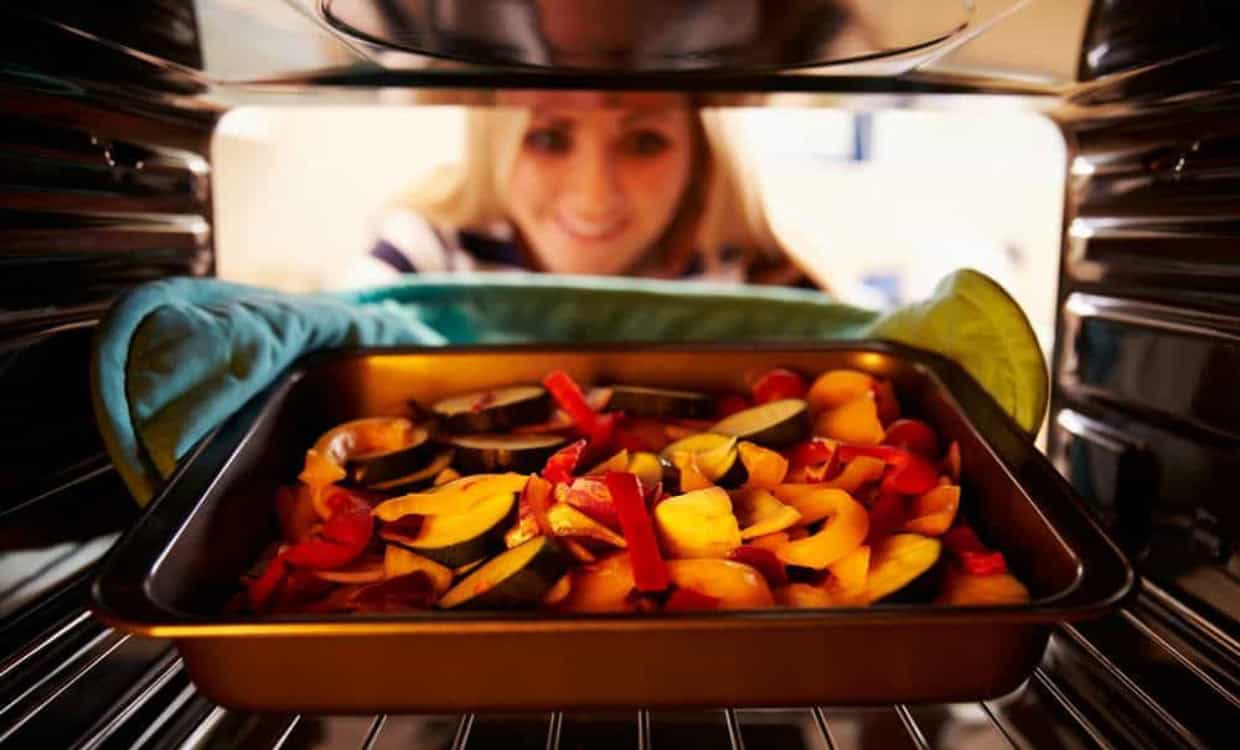Steaming summer days got you avoiding the oven? Fear not. Here’s a clever trick: leverage leftover heat to cook amazing meals without turning on another appliance.

The science behind the sizzle
Ovens and stoves retain heat after being turned off. According to General Electric, “the oven interior is designed to retain heat, even several hours after the oven has been turned off after cooking.” Retained heat isn’t wasted energy; it can be used to cook additional dishes or create delicious desserts without using extra energy.
Smart cooking with leftover heat
Using leftover heat saves energy because another appliance doesn’t need to be turned on. It also keeps you from turning on another appliance, which saves energy as well. You can enjoy warm treats without creating more heat. This not only helps you and benefits your wallet, but helps keep your house cooler during the hot summer months.
Turn off the oven early
Many dishes, especially baked goods, can continue cooking after the oven is turned off. The residual heat can be used to bring the internal heat to the desired temperature. This reduces the amount of time the oven is actively using energy. Switch the oven off 10 to 15 minutes in advance when cooking a casserole or lasagna and your dish will continue cooking using the residual heat. Make sure to keep the oven door closed to make the most of the heat.
Reduced preheating
Some recipes, like casseroles or slow-cooked meats, don’t require a fully preheated oven. Extend the cooking time slightly and place the dish in the oven during preheating. This utilizes preheating as part of the cooking process and reduces the amount of energy needed to cook the dish.
A culinary canvas with leftover heat
Leftover heat is not just for cooking. It can also be used for baking, reheating and melting. You can proof bread, ferment yogurt and dehydrate fruit or other healthy snacks. Home cook Shruthi Baskaran-Makanju of the blog Urban Farmie says, “During the summer if I do use the oven, I will turn off the oven but leave chocolate or butter inside on a heatproof dish. The residual warmth is perfect for gently melting chocolate or softening butter for a garlic spread. This method saves energy, keeps the kitchen cooler and makes the most of the heat already generated. I also use residual warmth — or sometimes just leave the oven light on — to proof bread and ferment yogurt or different types of batter.”
Sweet indulgences
Use leftover heat to melt chocolate and create decadent desserts like fudgy no-bake brownies. You can also use it to soften cream cheese for a no-bake lemon cheesecake. To make these desserts healthier, you can use dark chocolate or incorporate fresh fruit. If you have heated your oven at a higher temperature for something else, you can use the leftover heat for breads, desserts or cookies, like toffee cookies, that require a slightly lower temperature. Make sure to adjust the cooking time accordingly and check for doneness a few minutes earlier than the recipe suggests.
Savory sensations
Gently simmer sauces or poach eggs or fish with leftover heat. Using leftover heat adds flavor without heating up the kitchen, which is perfect for summer. After roasting vegetables or meats at a high temperature, turn off the oven and leave your dish inside. The residual heat will continue to cook your food slowly, which is perfect for tougher cuts of meat.
Breakfast champions
The residual warmth from your preheated oven can also be used to proof bread dough or to keep cooked oatmeal warm. Leftover heat can be used to reheat leftovers from the night before for a quick and easy morning meal as well.
Dehydrating
The low and slow heat from your oven is perfect for dehydrating fruits, vegetables and herbs. Place thinly sliced items on a baking sheet and leave them in the turned-off oven with the door slightly ajar. Check on them periodically and rotate the trays for even drying.
Toast nuts and seeds
After cooking dinner, leave the oven on to toast nuts or seeds for a delicious snack. Toasting nuts and seeds increases their shelf-life if kept in an airtight container. The heat also helps bring out their natural oils and flavors and reduces the risk of E. coli or salmonella.
Orchestrating the Heat
Plan ahead to take full advantage of leftover heat. Remember, the oven isn’t the only source to get leftover heat. You can also use leftover heat from the stove to simmer sauces, keep cooked vegetables warm or even proof bread dough.
Planning is key
Plan meals that take advantage of leftover heat. Roast vegetables after preheating the oven for a main course. Then use the residual warmth to gently cook a side dish of quinoa or rice, saving energy and reducing your overall cooking time.
Think beyond the oven
Leftover heat from a pot of boiling water can be used to steam vegetables or hard-boil eggs. For a quick and flavorful meal, simmer a light sauce by using the leftover heat from cooking pasta without turning the stove back on.
Final thoughts
Using leftover heat for summer cooking saves energy, reduces reliance on additional appliances and allows for creative and delicious dishes. It’s not just budget-friendly but environmentally conscious and keeps your kitchen cooler during the hottest summer months.
Heidi is also a vintage recipe blogger at Real Life of Lulu, where she focuses on recipes that are at least 50 years old, many from her grandparents’ kitchens.